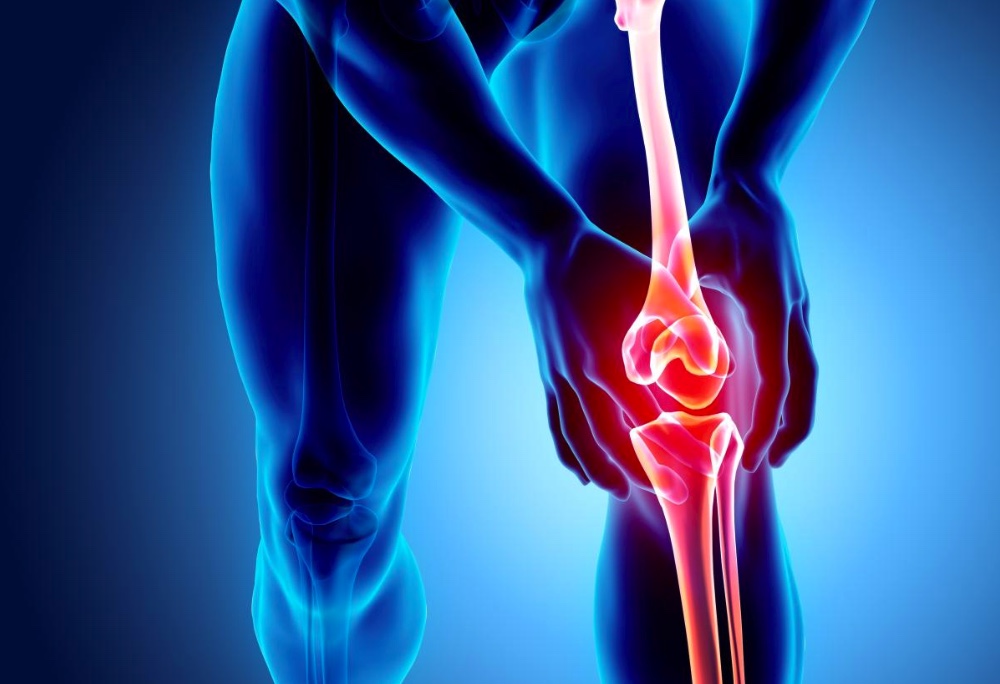#thethailandersnews
หัวเข่าอาจเป็นข้อต่อที่หลายคนมองข้าม แต่ในความจริงแล้ว เข่าเป็นส่วนสำคัญที่คอยรับน้ำหนักและทำหน้าที่เป็นกลไกหลักในการเคลื่อนไหวเกือบทุกกิจกรรมในชีวิตประจำวัน ทั้งการเดิน วิ่ง นั่ง ย่อ เข่าเป็นข้อต่อที่ต้องรองรับแรงกดสูงกว่าน้ำหนักตัวจริงหลายเท่า โดยในขณะเดิน เข่าต้องรับแรงกดประมาณ 1.5 เท่าของน้ำหนักตัว และขณะวิ่งอาจเพิ่มขึ้นเป็น 3–5 เท่า หากละเลยการดูแล เช่น การเพิ่มน้ำหนักตัวมากเกินไป การนั่งนาน ๆ โดยไม่เคลื่อนไหว หรือการออกกำลังกายที่หักโหมเกินไป อาจทำให้เข่าเสื่อมและเจ็บปวดได้เร็วขึ้น
งานวิจัยจาก Arthritis & Rheumatism และบทความใน Annals of Internal Medicine (2013) ชี้ว่า การลดน้ำหนักเพียง 0.5 กิโลกรัม จะช่วยลดแรงกดที่ข้อเข่าขณะเดินได้ถึง 2 กิโลกรัมต่อก้าว หรือเท่ากับถ้าลดน้ำหนักได้ 1 กิโลกรัม และเดินวันละ 5,000 ก้าว เข่าจะรับแรงกดน้อยลงถึง 20,000 กิโลกรัมต่อวัน ซึ่งเป็นตัวเลขที่น่าทึ่งและสะท้อนให้เห็นว่าการควบคุมน้ำหนักไม่ได้มีดีแค่เรื่องรูปร่าง แต่ช่วยยืดอายุการใช้งานของข้อเข่าได้จริง

ข้อเท็จจริงที่สำคัญคือ แม้ว่าการลดน้ำหนักอาจไม่สามารถรักษาอาการปวดข้อ หรือโรคข้ออักเสบให้หายขาดได้โดยสมบูรณ์ แต่ได้รับการยืนยันแล้วว่าสามารถลดการสึกหรอของข้อต่อได้อย่างมีประสิทธิภาพ การลดภาระที่ข้อเข่าส่งผลโดยตรงต่อการลดการอักเสบ ลดความเจ็บปวด และนำไปสู่การเพิ่มประสิทธิภาพในการเคลื่อนไหว ซึ่งเป็นประโยชน์อย่างยิ่งสำหรับผู้ป่วยที่มีภาวะข้ออักเสบ ข้อติด หรือภาวะข้อเสื่อม เนื่องจากแม้การเปลี่ยนแปลงน้ำหนักเพียงเล็กน้อย ก็สามารถสร้างความแตกต่างอย่างมีนัยสำคัญต่อคุณภาพชีวิตและการเคลื่อนไหวได้
ดังนั้น หากใครกำลังมองหาเหตุผลที่จะลุกขึ้นมาเดิน หรือปรับพฤติกรรมการกินให้ดีขึ้น ลองคิดถึงข้อเข่าของคุณ เพราะแค่ลดน้ำหนักเพียงเล็กน้อยก็สามารถลดแรงกดมหาศาลได้จริง ๆ และอาจเป็นจุดเริ่มต้นที่ทำให้เข่าของคุณ “ขอบคุณ” คุณในระยะยาว
The knee is often an overlooked joint, yet it plays a crucial role in supporting our body weight and enabling almost every movement in daily life — walking, running, sitting, squatting. In fact, the knee has to bear forces several times greater than our actual body weight: while walking, the knee endures about 1.5 times body weight, and when running, it can increase to 3–5 times. Ignoring knee care — such as excessive weight gain, prolonged sitting without movement, or over-exercising — can accelerate joint deterioration and lead to pain much sooner than we realize.
Research from Arthritis & Rheumatism and an article in Annals of Internal Medicine (2013) found that losing just 0.5 kilograms can reduce the load on the knee by as much as 2 kilograms per step. In practical terms, if you lose 1 kilogram and walk 5,000 steps a day, your knees would experience 20,000 kilograms less force daily. This striking figure highlights that weight management is not only about appearance but is vital for preserving knee health and extending joint longevity.
An important fact to note is that while weight loss alone cannot completely cure joint pain or arthritis, it has been proven to significantly reduce joint wear and tear. Decreasing knee load directly reduces inflammation and pain, leading to better mobility and improved overall movement. This is particularly beneficial for individuals with arthritis, joint stiffness, or degenerative joint conditions, as even small changes in weight can create meaningful differences in quality of life and ease of movement.
So, if you’re looking for a reason to start moving more or to improve your eating habits, think of your knees. Just a small amount of weight loss can drastically decrease the stress on them — and might be the first step toward a future where your knees will “thank” you for taking care of them.
#HealthyJoints #Knees #Exercise #WalkingBenefits
ที่มา : www.cochranelibrary

















